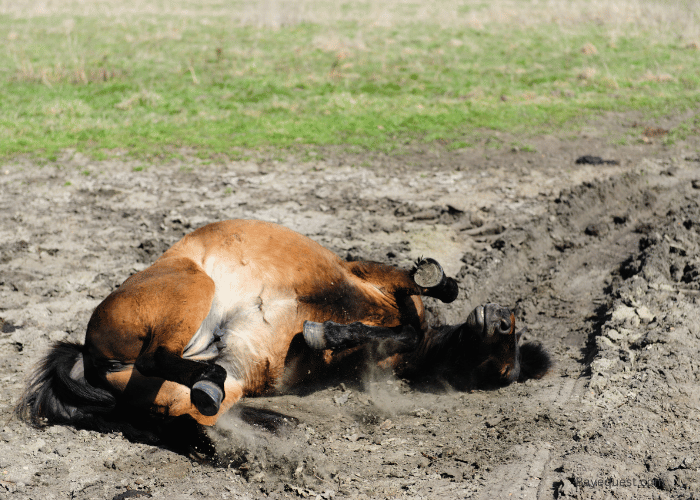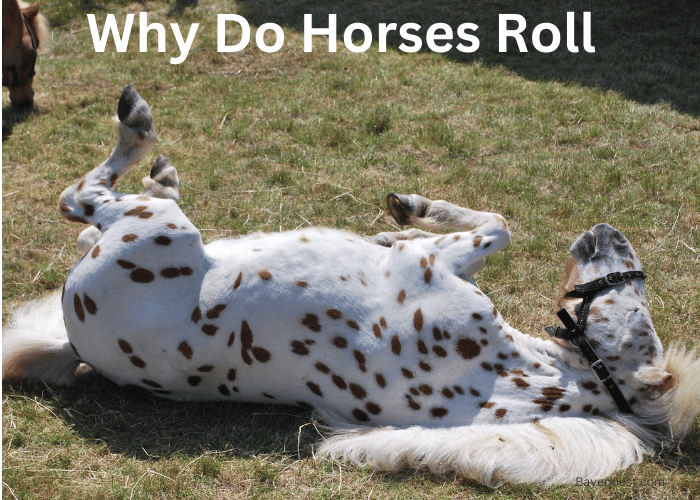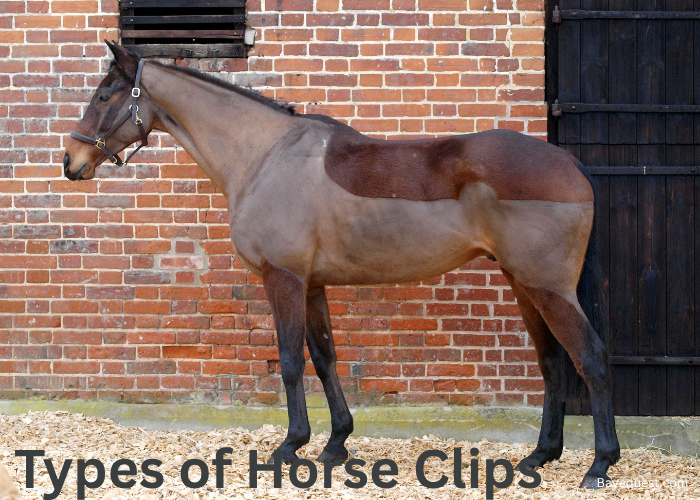Did you know that horses roll to scratch those hard-to-reach spots? As an equine expert, I can tell you that rolling is more than just a quirky habit.
Many horse owners wonder if it signals a problem or just horseplay. In this article, we’ll dive into the reasons behind this fascinating behavior and dispel common myths.
Stay with us to uncover the surprising truths about why horses love to roll.
Why Do Horses Roll? Key Takeaway
Horses roll to scratch itches, shed their coat, and regulate body temperature. This behavior often indicates relaxation and contentment. Rolling can also help with muscle relaxation and may even serve as a way for horses to bond socially, as they often roll one after another in the same spot.
Reasons Why Horses Roll
First up, it’s all about getting that itch. Just like us, horses get itchy. But without hands to scratch those hard-to-reach places, rolling on the ground is their go-to solution. It’s their way of saying, “Ah, that’s the spot!”
Next, think of rolling as a horse’s version of applying sunscreen and bug repellent. Rolling in the dirt or mud creates a protective layer on their skin. This barrier can keep away annoying bugs and even shield them from the harsh sun. Smart, right?
Then there’s the big shed. When the seasons change, and it’s time to lose their winter coat, rolling helps horses to shed those extra layers. It’s like taking off a heavy winter jacket without using your hands.
Rolling also equals relaxation and happiness. It’s a joyous stretch to loosen up and feel good. Watch a horse roll, and you’ll likely see them get up with a spring in their step, looking quite pleased with themselves.
Remember, horses are social creatures. Sometimes, rolling is a group activity. It’s like when one person yawns and suddenly everyone yawns. One horse starts rolling, and it can become a party.
But it’s not always just for fun or comfort. Rolling can be a sign that something’s up, like when they’re feeling colicky. If a horse rolls more than usual, it might be their way of telling us they’re not feeling great.
In the wild, rolling was also a way to mask their scent from predators. Today, it’s less about hiding from wolves and more about those other points, but it’s still fascinating how these instincts carry on.
Interesting read: How to build topline in horses.
The Significance of Rolling in Different Conditions
Here’s what rolling in different conditions means for horses:
Rolling in dust vs mud
When a horse rolls in dust, it’s like applying a dry shampoo. The dust absorbs excess oil and sweat from their coat, keeping them clean and deterring parasites.
Now, rolling in mud? That’s a different story. It’s the equine equivalent of putting on a mud mask.
Mud cools their skin, provides a barrier against insects, and can also protect against sunburn. Each serves a purpose based on the horse’s immediate needs and the environment they’re in.
Rolling after a bath
Ever notice how a horse loves to roll right after a bath? It might seem counterproductive, but to a horse, it’s perfectly logical.
They’re not just getting dirty again; they’re replacing their natural scent that’s been washed away. This natural scent is important for their comfort and for social reasons within the herd.
Rolling during summer
Summertime rolling is all about beating the heat and the bugs. Rolling in dust or mud can cool them down on hot days and offer a physical barrier against biting insects.
Plus, it can be a way to apply natural sunscreen by covering their skin with a layer of dust or mud.
Rolling during winter
In winter, rolling helps horses to adjust their winter coat for better insulation. The act can help to fluff up their coat, improving air circulation within the fur, which enhances its insulating properties.
Rolling on snow or frost can also help them scratch itches when they shed their winter coats as the seasons change.
Rolling after eating
Rolling after eating can sometimes be a sign of digestive comfort or the opposite, discomfort. If a horse has a full belly and rolls, it’s often just relaxing after a good meal.
However, excessive rolling after eating can be a red flag for colic, especially if it seems out of character.
Rolling as soon as the horse is turned out
When a horse rolls as soon as they’re turned out, it’s like us stretching after getting out of bed. It’s their way of loosening up after being confined to a stall.
This rolling is also a quick way for them to engage with their natural instincts, marking their scent on the ground. Sometimes, it’s just about reveling in the freedom of a wider space.
Interesting read: How to kill boredom in horses.
Is Horse Rolling Contagious?
Yes, rolling can seem “contagious” among horses, but it’s not like spreading a disease. It’s more about their social behavior and mimicry.
When one horse rolls, others in the herd do the same. This action reflects their social dynamics and instincts.
Horses are social creatures, and their actions can trigger similar behaviors in others. For several reasons, seeing one horse roll can signal others to roll, too.
They might roll together as a way to bond or take turns rolling while others watch out for danger, following an instinct from their wild ancestors. Sometimes, a good rolling spot can also attract others to roll there.
But it’s not just social; the environment plays a role too. Seasonal changes or after rain, when the ground is softer and muddy, can make rolling more appealing.
One horse rolling in mud can lead others to seek the same comfort, especially to cool off or avoid bugs.
Watching horses roll together can offer insights into their group dynamics and show if they’re comfortable. It’s usually a healthy behavior.
Still, caretakers should watch out. If a horse rolls more than usual, it could mean discomfort or distress, needing attention.
Interesting read: Why Do Horses Nod Their Heads?

When Rolling Might Indicate a Problem
When horses roll, it’s often a healthy and natural behavior. However, there are times when rolling could indicate a problem or distress. Recognizing these signs can help ensure the horse gets the care it needs promptly.
Excessive rolling. If a horse is rolling more frequently than usual, especially with signs of urgency or discomfort, it might be trying to relieve some internal pain. This behavior is particularly concerning if it’s out of character for the horse.
Signs of colic. Colic, a broad term for abdominal pain in horses, is a serious concern and one of the leading causes of premature death among horses. A horse with colic might roll to relieve the discomfort. Excessive rolling in this context can also increase the risk of twisting the gut, leading to a life-threatening situation.
After eating certain plants. Some plants can cause neurological issues or discomfort in horses, leading to unusual rolling behavior. If you notice your horse rolling more than usual after grazing or being in a new pasture, consider the possibility of toxic plant ingestion.
Unusual circumstances. Rolling immediately after eating, while not always a sign of distress, can occasionally indicate discomfort. Similarly, if a horse rolls in situations where it usually wouldn’t—like immediately after being saddled—it could indicate discomfort with its tack or a physical issue.
Distress signals. Pay attention to the context and accompanying signals. A horse that’s rolling but also seems lethargic, has a decreased appetite, or shows other changes in behavior might be in distress.
Observing and Managing Rolling Behavior
Observing and managing rolling behavior in horses can give us insights into their health, comfort, and well-being. Understanding rolling as a form of grooming and a sign of happiness helps in providing better care.
Rolling as a form of grooming
Horses use rolling on the ground as a natural way to maintain their coat and skin health. This behavior helps in several ways. These include:
Exfoliation. Rolling removes dead skin and hair, especially during the shedding season. It’s a self-service spa treatment that keeps their coat in good condition.
Parasite control. Rolling can help dislodge parasites and prevent infestations. Dust and mud create a barrier that deters insects from biting.
Stimulating blood flow. The pressure and friction of rolling can enhance circulation to the skin, promoting healthier skin and hair growth.
Managing rolling for grooming
- Provide a safe, designated area for rolling. This area should be free of hazardous objects and have soft soil or sand that allows for a comfortable roll without causing injury.
- Regular grooming complements rolling. Brushing can help remove the excess dirt and hair loosened by rolling, keeping the coat in optimal condition.
Rolling as a sign of happiness
Rolling can also be a clear indicator of a horse’s contentment and relaxation. Horses often roll when they feel safe and happy in their environment. Here’s how to support this positive behavior:
Freedom to express. Ensure horses have regular turnout time in a safe, open area where they can roll, run, and express natural behaviors. This freedom is crucial for their mental and physical health.
Observation. Pay attention to when and where your horse prefers to roll. This can tell you a lot about their comfort preferences and may indicate their favorite spots or times of day for rolling.
Social rolling. Horses may also roll as part of social behavior when in a group. Allowing horses to interact with herd mates in a controlled, safe environment can encourage natural, positive behaviors like this.
Encouraging healthy rolling behavior
- Always monitor the horse’s rolling to ensure it remains a sign of happiness and not distress.
- Regularly check the rolling areas for safety, removing any rocks, sticks, or debris that could harm the horse.
- Understand the balance between rolling as a natural behavior and when it might indicate a need for veterinary attention, such as in cases of excessive rolling due to colic.
Why do Horses Paw the Ground Before they Roll?
Horses paw the ground before they roll for several reasons, each deeply rooted in their natural behaviors and instincts. This preparatory action is not just a random act; it serves specific purposes:
- Checking the terrain
- Creating a comfortable spot
- Temperature regulation
- Marking territory
- Instinctive behavior
Read also: What Music Do Horses Like?
How Can I Stop My Horse from Rolling When I’m Riding?
Stopping a horse from rolling while you’re riding can be crucial for safety, as a rolling horse can endanger both the rider and itself. Here are some strategies to help prevent this behavior:
- Understand the urge
- Ensure proper tack fit
- Keep your horse moving
- Routine grooming
- Proper cool-down
- Training and consistency
- Evaluate health and comfort
- Avoid trigger spots
Interesting read: Why do horses eat droppings?
FAQs
Can rolling cause the gut to twist?
No, rolling itself does not cause a horse’s gut to twist. Twisted gut, or volvulus, is a severe condition often resulting from pre-existing gastrointestinal issues. While rolling is a natural behavior for horses, excessive rolling due to discomfort, especially in a horse already experiencing colic, might coincide with a twisted gut.
Is it bad for horses to roll?
No, rolling is not bad for horses. It is a natural and beneficial behavior that helps with skin and coat maintenance, provides a means for horses to stretch and relax their muscles, and can be a sign of contentment.
Should I let my horse roll if he has colic?
It’s okay but please take caution. While rolling is a natural behavior, excessive rolling due to colic can potentially worsen the condition, especially if a gut twist (volvulus) or other serious gastrointestinal issue is present.
Conclusion
In conclusion, the act of horses rolling is a multifaceted behavior. It encompasses grooming, comfort, and social interaction.
This natural activity is essential for their physical health, aiding in skin care and muscle relaxation, and also reflects their psychological well-being, serving as an expression of happiness and a method for social bonding.
Understanding why horses roll allows you to better appreciate and support this behavior. So, when you next observe a horse luxuriating in a roll, recognize it as a profound insight into its complex and fascinating world.








